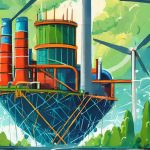Comprehensive Showcase of Global Water Use Efficiency Innovations & Startups
From CLIMAFIX, the leader in climate innovation intelligence
Water Use Efficiency Introduction:
Water is perhaps the most used resource by every part of society. Water use and water management require significant amounts of energy, contributing to significant CO2 emissions. Water use efficiency enhancements can thus have a significant impact on decarbonization.
Globally, agriculture contributes to about 70% of water use, and industries a bit over 20%. Water use by the domestic residential segment is thus less than 10%.
Water use efficiency solutions thus need to have a high focus on the agricultural and industrial sectors. Between the two, it is easier to implement many measures in industries as they represent an organised sector where mandates and target settings are more likely to work. The agricultural sector is a more difficult sector to tackle given its distributed nature, relatively unorganised structure, and the challenges involved in convincing farmers to invest in innovations.
Water use and water treatment can consume significant energy. In India alone, annually, water pumping consumes about 16 TWh of electricity (about 2% of total electricity demand) and 2 million tons of diesel (about 3% of total). Worldwide, wastewater treatment plants consume about 200 TWh of electricity annually, about 0.8% of total global electricity consumption.
While implementing water use and treatment efficiency on a global scale is a challenging task, it could result in significant decarbonization in the medium to long term, especially as the global population increases, with significant additions in the developing and underdeveloped nations, leading to water scarcity and extra resources and energy applied to source water.
For the 2020-2030 period, innovations can be expected in the use of digital technology for water conservation and use efficiency, modular & efficient systems for water application for irrigation, leak detection solutions for large-scale water storage & distribution infrastructure, use of automation to conserve water used for industrial and commercial applications, and use of alternatives that do away with water requirements (waterless and self-cleaning solar panels, for instance).
The Water Use Efficiency Innovations & Startups Report provides insights on the following:
- Current & Emerging Technologies
- Innovation & Startups Analysis
- Urgency of this Decarbonization Avenue
- Unique Solutions Derived from Startups
- Commercialization Potential
- Scalability
- Highlights of Prominent Innovations & Startups
- List of 10 High-Impact Startups
For each startup, the following inputs are provided:
- Product
- Key benefits
- Technology & process
- Videos
- Links to founder profiles
- Links to prominent news & analyses about the startup
The Water Use Efficiency Innovations Report is part of CLIMAFIX 500, a comprehensive global climate innovation and startup report.



